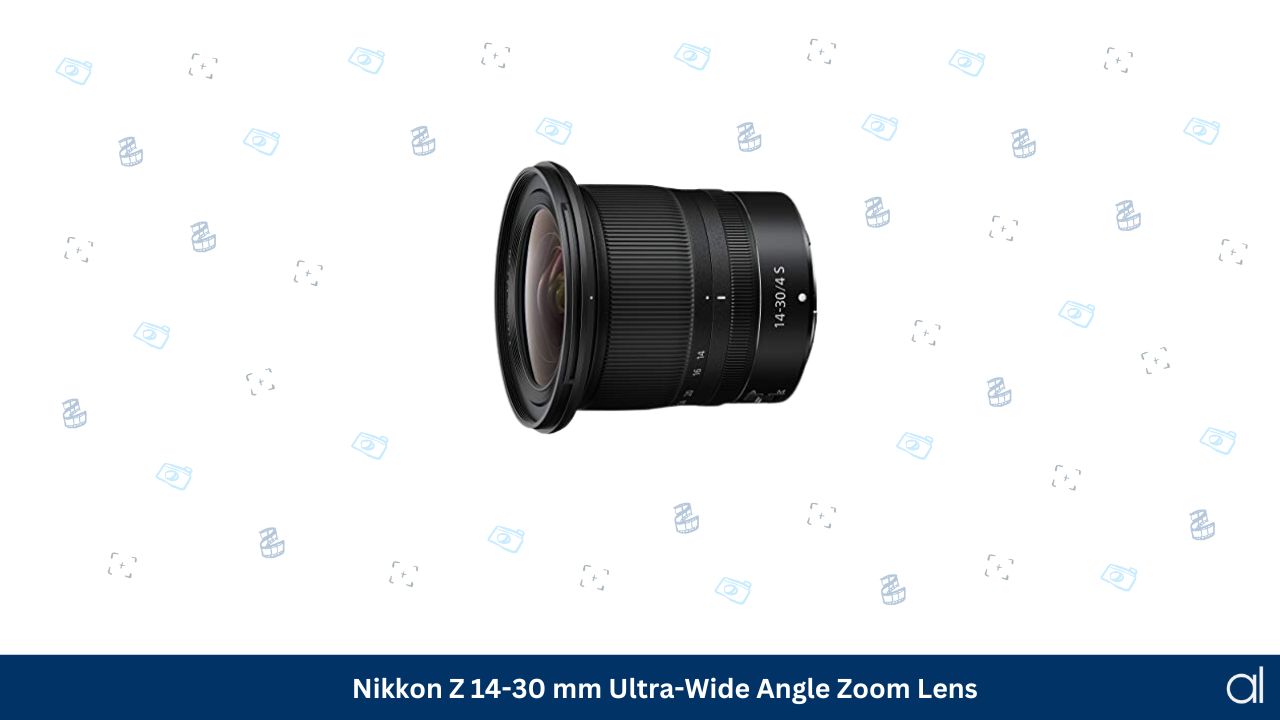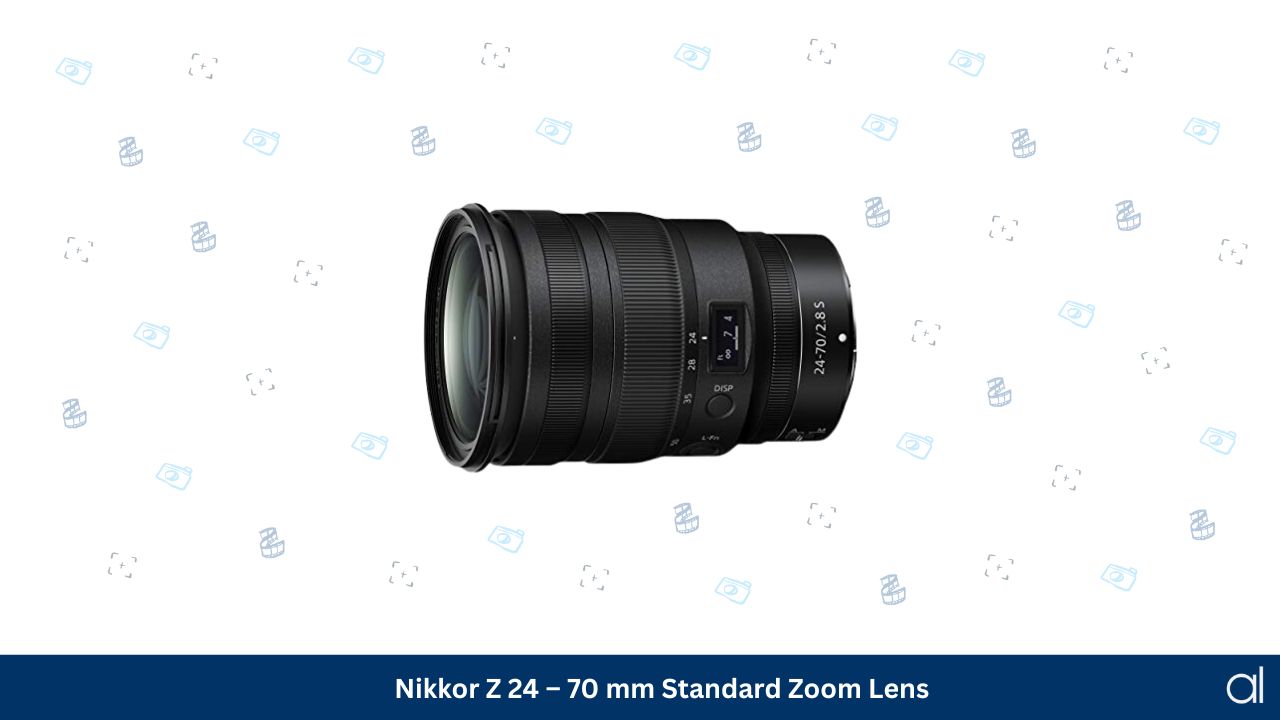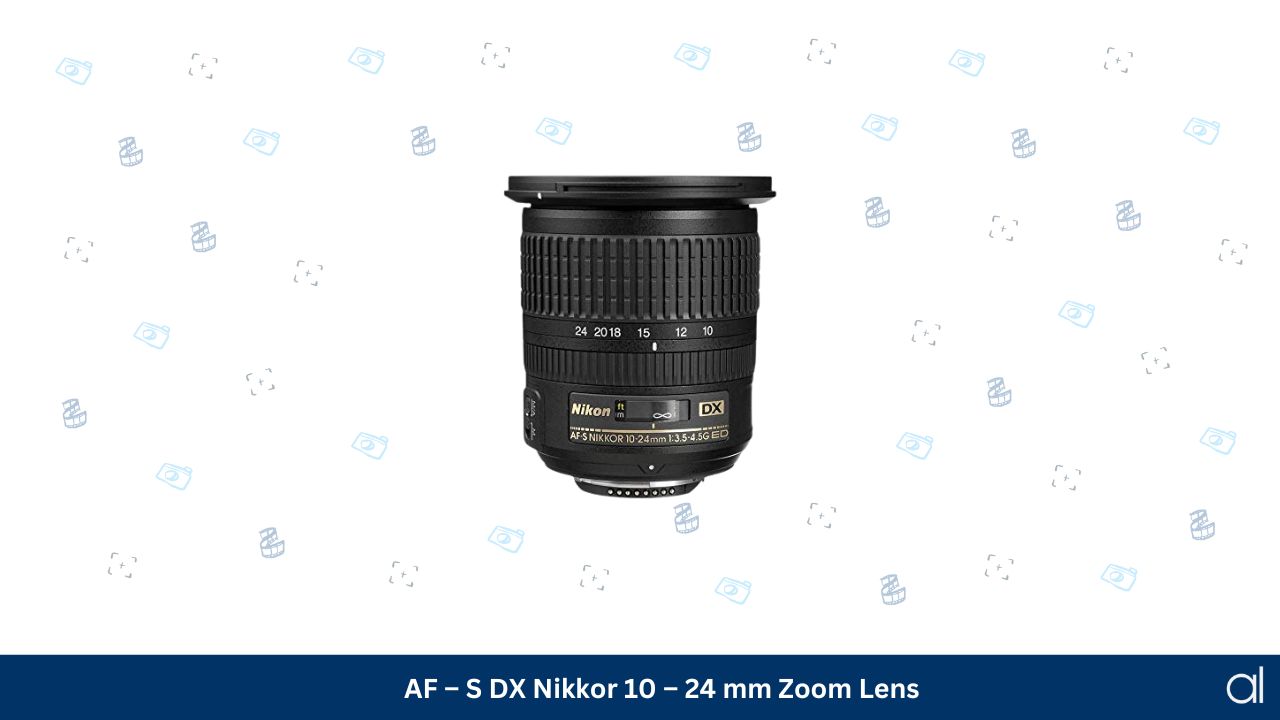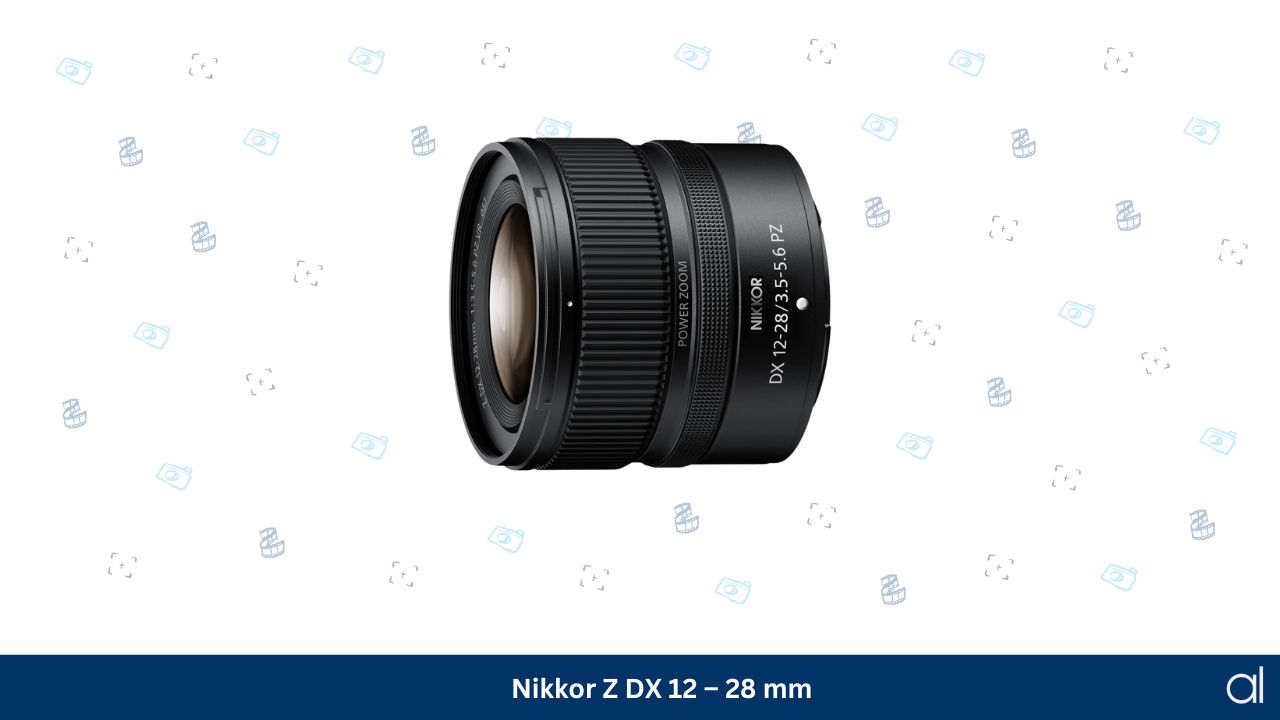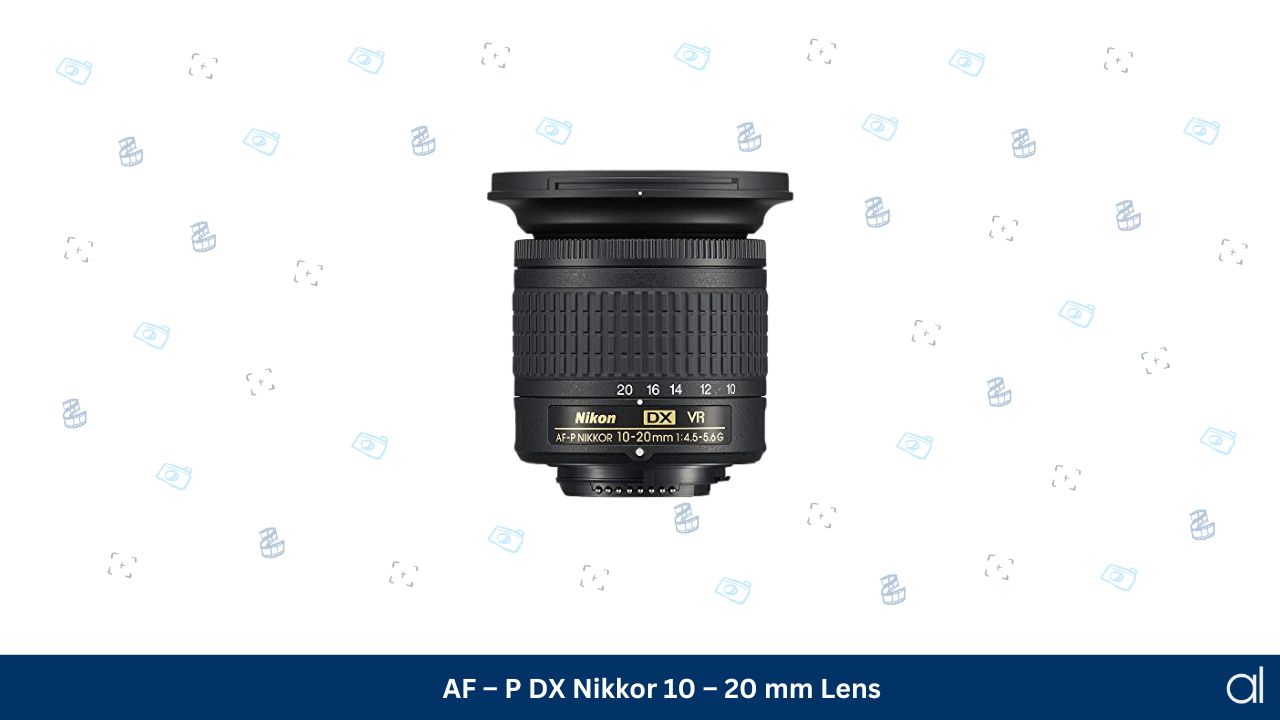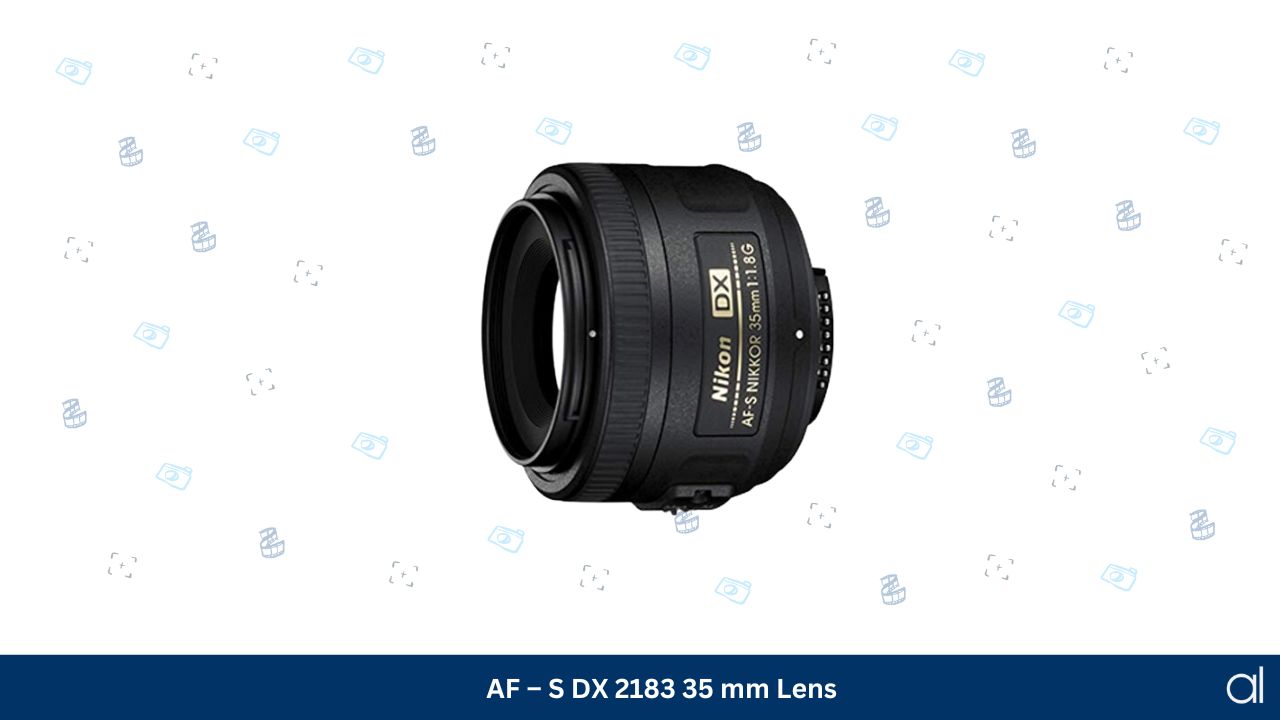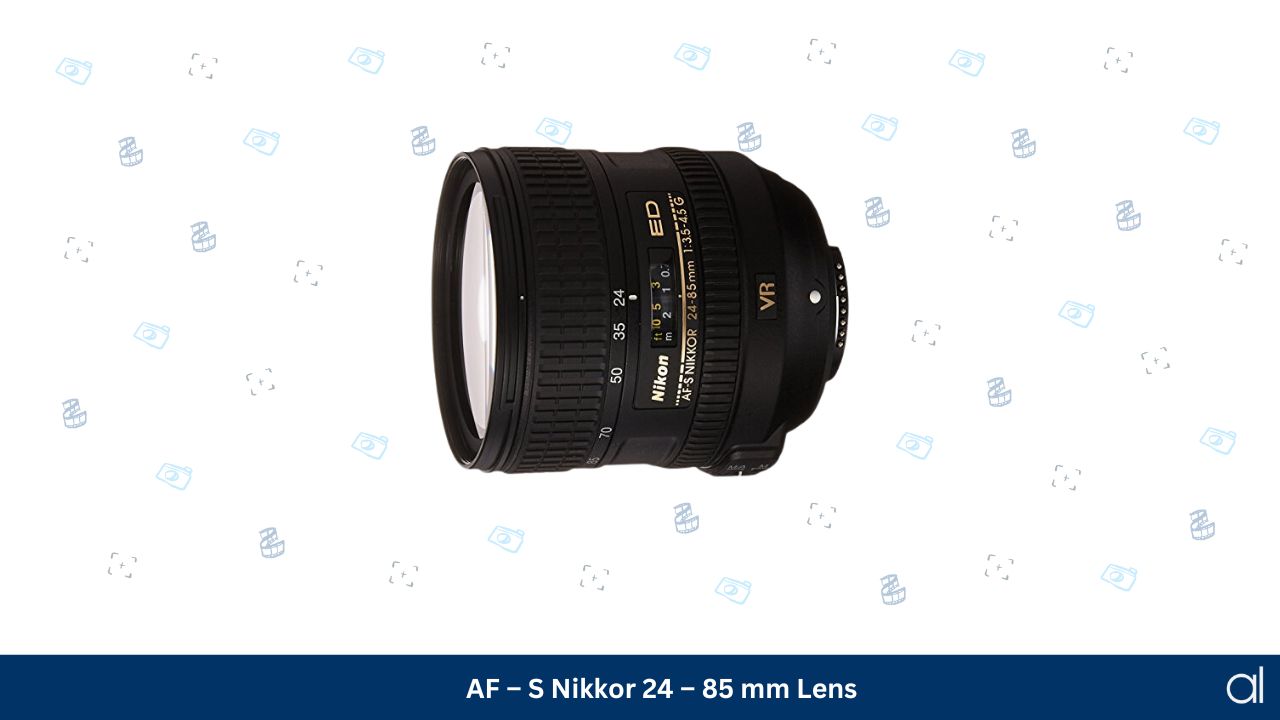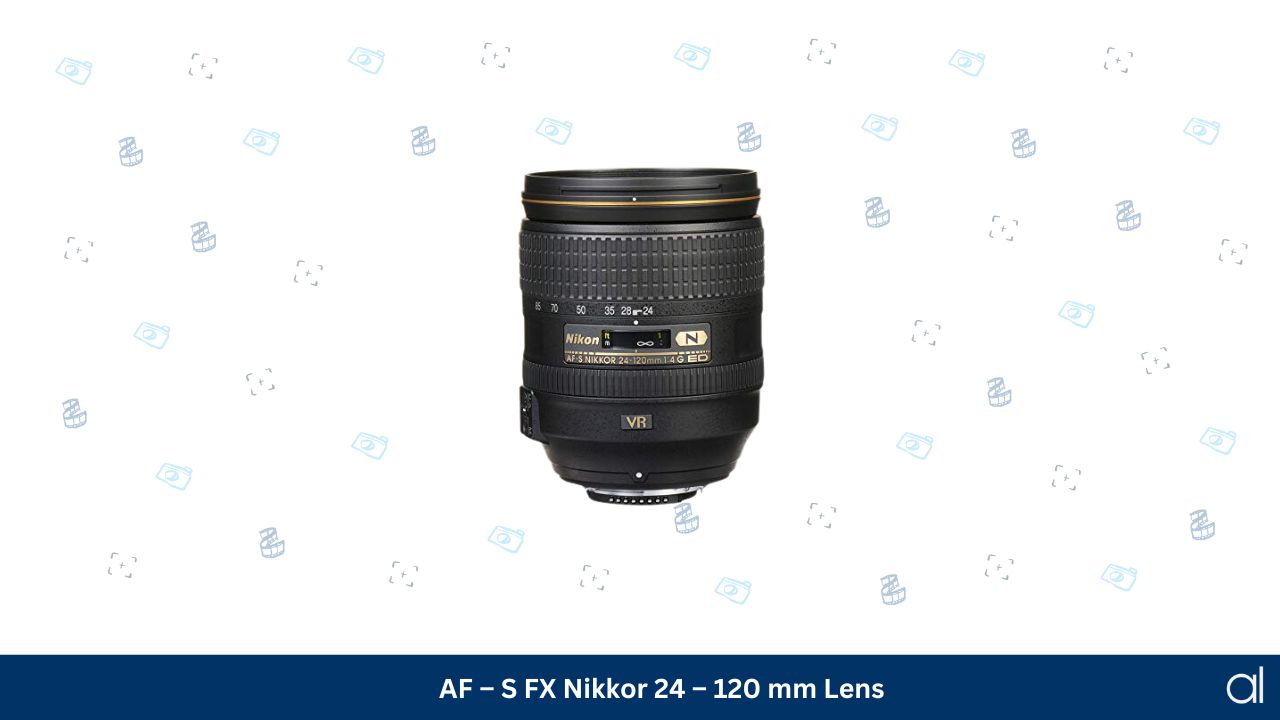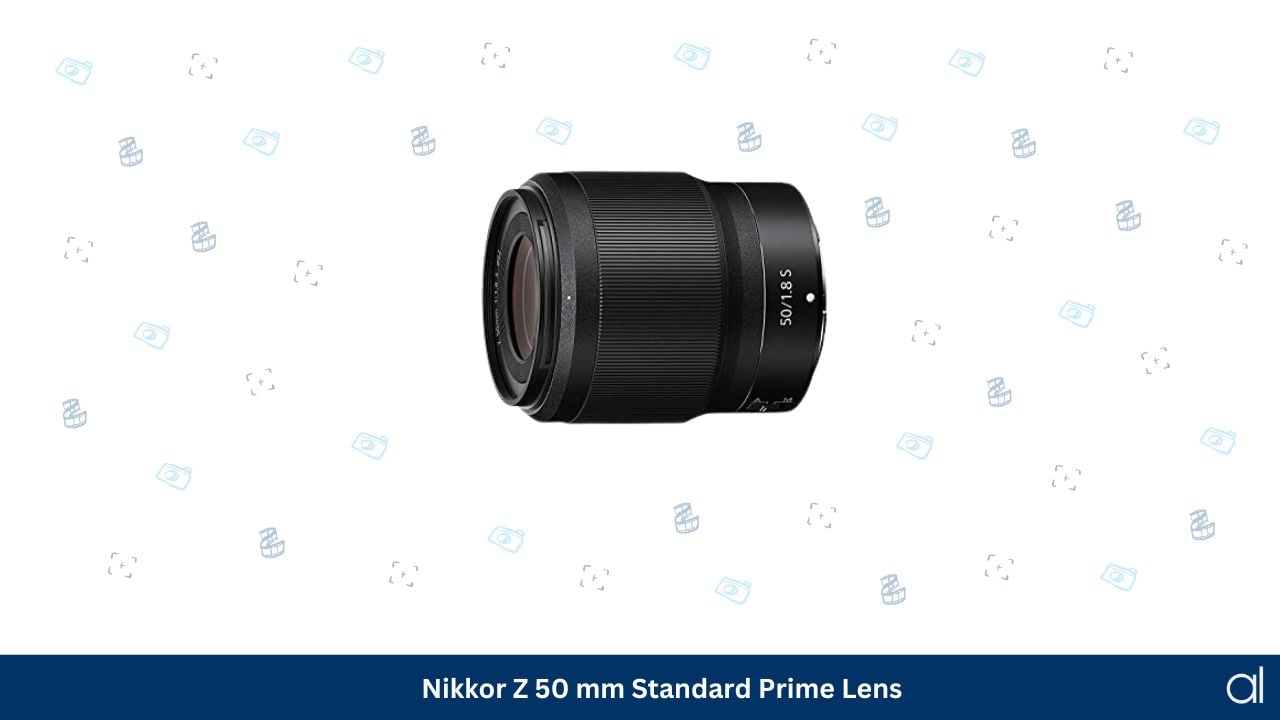Like any other kind of photography, architectural photography is an art. And any art requires the very best tools to get the perfect results. And for photography, that means the best cameras and the best lenses.
But finding that perfect lens can be quite tricky. To solve that exact problem, I have drawn up a list of the best 9 Nikon lenses available in 2023 for architectural photography. So, let’s get into it!
Best Nikon Lenses For Architectural Photography
1. Nikkor Z 14-30 mm Ultra-Wide Angle Zoom Lens – Best Lens Overall For Architectural Photography
The Nikon Nikkor Z ultra-wide-angle zoom lens has a compact 14 – 30 mm zoom range with a fixed f/4 aperture, allowing for outstanding photography. The front lens element is nearly flat, meaning you can easily attach a polarizer to reduce reflections, enhance contrast, and produce more vivid colors. The lens also holds the ability to take the standard 82 mm circular filters.
After putting it to the test, I found that you can store it in your bag easily. Its retractable lens mechanism collapses the lens down to a mere 3.5 inches and locks it in place for safe and minimal packing. Additionally, the lens itself weighs next to nothing, so if you are looking for a lightweight lens, this is the one to go with.
Moreover, the customizable control ring can be used for manual focusing, aperture control, and exposure compensation. With edge-to-edge sharpness and minimal distortion, this lens is perfect for landscape photography.
All in all, this is a lightweight lens, which would make for the perfect wide-angle lens for architectural photography.
What I Liked
- Great for landscape photography
- Extremely lightweight
- Compact and space-saving design
- Smooth and fast autofocusing
What I Didn’t Like
2. Nikkor Z 24-70 mm Standard Zoom Lens – Best For Consistent Exposure
With a larger focal length range than the last option, this Nikon lens is another wide-angle lens that is great for architectural photography. The constant aperture of f/2.8 ensures that the exposure remains consistent across the entire zooming range.
The lens incorporates a Multi-Focusing System, which consists of 2 AF drive units. Both the units are programmed to work simultaneously to ensure fast and accurate autofocusing, along with reduced aberrations across the entire zooming range. The Stepping Motor system of Nikon (NSM) also provides smooth and fast autofocusing while shooting videos.
Moreover, the lens is well-equipped to prevent any moisture or dust from coming in, even around the barrel’s moving parts.
What I Liked
- Multi-focusing system
- Safety from dust and moisture
- Smooth and fast autofocus
- Consistent exposure
What I Didn’t Like
3. AF-S DX Nikkor 10-24 mm Zoom Lens – Best For Smooth Autofocus
The Nikon AF – S DX Nikkor camera zoom lens is great for landscapes, cityscapes, interiors, and architectural photography. This wide-angle lens offers good coverage of 109 degrees. So, it is an ideal option for when you want to capture your architectural model from a distance. Also, the wide aperture makes for great blurred backgrounds.
Moreover, the SWM function enables fast, quick, and accurate autofocus operation. This allows superior sharpness and color correction by effectively minimizing chromatic aberration and surrounding noise.
And lastly, the lens is extremely lightweight and compact. So, you don’t need to worry about its weight while you are taking shots while traveling.
However, I would like to point out one limitation. This lens is not the best option for low-light photography. If the day is cloudy or rainy and there is not a lot of light around, you might notice flares or distortions in your photographs.
What I Liked
- Wide angle lens
- Lightweight and compact lens
- Smooth, fast, and quick autofocus
- Zoom lens
What I Didn’t Like
4. Nikkor Z DX 12-28 mm – Best Value For Money
The Nikon Nikkor Z DX 12 – 28 mm lens is a versatile ultra-wide-angle zoom lens. With focal lengths ranging between 12 and 28 mm, you can capture both dramatic and natural views with this lens.
The 4.5 stops of built-in optical VR (vibration reduction) counteracts the shakiness of the camera for stability. Additionally, you can get really close focus with this lens and be as close as 11 inches to the subject.
Moreover, the zoom operation of this lens is outstanding. You can select 11 different speeds- from slow and subtle to practically instantaneous.
Lastly, this lens is quite affordable compared to the options above. So, if you are a beginner or on a budget, this would offer great value for money.
What I Liked
- Power zoom
- Close autofocus
- Ultra-wide angle zoom lens
- Built-in vibration reduction
What I Didn’t Like
5. AF-P DX Nikkor 10-20 mm Lens – Best For Distant Photography
The Nikon AF – P DX Nikkor lens offers an angle range of 109 degrees to 70 degrees, allowing for great distant photography of architectural models and monuments. This ultra-wide angle lens will offer better results than any kit lens.
Additionally, the lens is extremely compact and lightweight. It’s also quite durable, so you can easily travel with this lens in your bag during your photography sessions. The Vibration Reduction (VR) makes sure that your photos and videos will come out without any blurriness or shakes.
Moreover, the near-silent autofocus stepping motor makes this lens great for recording videos. That also means there is minimal focusing noise in your photos. Even more, the aspherical lens eliminates nearly all natural distortions and contributes to making this lens lightweight and compact.
Lastly, the Super Integrated Coating (SIC) prevents any lens flare or ghosting in cross-lit or back-lit situations, helping to retain most of the color of the image.
Talking about the limitations, drawing from my experience, this lens is not great for low-light photography. It’s also made of plastic and has no weather seal, giving it a cheap kit lens feel.
What I Liked
- Vibration reduction
- Affordable
- Lightweight and compact
- Quiet autofocus
What I Didn’t Like
6. AF-S DX2183 35 mm Lens – Best Lightweight Lens
The Nikon AF – S DX 2183 camera lens is a great lightweight lens, offering outstanding performance in low light conditions. So, say yes to nighttime architectural shooting with this lens. All thanks to the maximum aperture of f/1.8. Plus, you can capture a lot of details with this go-to lens.
You also get beautiful blurry backgrounds with this lens, which will give your architectural photographs a magical feel. Other than that, the silent wave motor AF system and the fast and accurate autofocus allow for great image quality. The lens also has the features of manual focus override and rear focusing.
However, after trying out this product, the biggest drawback of this aspherical lens is that it doesn’t have any zooming option. So, you can’t change the focal length. And although that does mean better photo composition and good low-lighting photography, you get somewhat limited in your endeavors.
What I Liked
- Silent wave motor AF system
- Good for low-light photography
- Beautiful blurry backgrounds
- Manual focus override
What I Didn’t Like
7. AF-S Nikkor 24-85 mm Lens – Best For Vibration Reduction
This Nikon AF – S Nikkor lens also has the features of the silent wave motor AF system and internal focusing. Plus, the vibration reduction (VR) system of this lens will help to counteract the shakiness of the camera.
Covering a versatile wide-angle to medium telephoto zoom lens range, this allows for sharp and distinct details in your architectural photographs. Plus, this lens would also be great for low-light photography with its maximum aperture of f/4.5.
However, my findings show that the lens does get a little bit soft around the edges. And even though it stacks up well against any wide-angle premium lens, this lens does have a cheap, lightweight feel to it. But, on the flip side, that means you can travel around with this lens without worrying about its weight.
All in all, this is a pretty great option for beginners, amateur architectural photographers, and people who are on a budget till they get a high-end lens.
What I Liked
- Silent wave motor AF system
- Vibration reduction
- Good for low-light photography
- Lightweight
What I Didn’t Like
8. AF-S FX Nikkor 24-120 mm Lens – Best For Sharp Photos
This Nikon AF – S FX 24 – 120 mm lens is a great advanced lens for DSLR cameras. It offers a constant maximum aperture to maintain exposure settings throughout the entire zoom range. Being compact and versatile, this lens is great for landscapes, portraits, and distant subjects.
The 2 extra-low dispersion elements offer a high degree of sharpness and color correction by effectively reducing any aberration, even at the widest aperture setting.
Additionally, the Nikon Super Integrated Coating (SIC) and the nano crystal coating help to reduce glare, enhance light transmission efficiency, and offer superior color consistency. Even the aspherical lens contributes to reducing any type of coma or aberrations.
What I Liked
- Vibration reduction system
- Super integrated coating
- Compact and lightweight
- Excellent walk-around lens
What I Didn’t Like
9. Nikkor Z 50 mm Standard Prime Lens – Best For Nikon Mirrorless Cameras
The Nikon Nikkor Z 50 mm standard prime lens is a great option for the Nikon Z mirrorless cameras series. Its aperture of f/1.8 results in extreme sharpness and provides virtually zero distortion.
The ultra-quiet stepping motor allows for smooth autofocusing. Additionally, the lens is also great for low-light photography.
Moreover, the lens is quite compact and lightweight. It’s powered by the Z system and enjoys the benefits of the big mount, the small flange distance, and high-quality videos.
And lastly, the 2 extra-low dispersion (ED), 2 aspherical lens elements, and the Nano Crystal Coat helps to virtually eliminate all lens glare, coma, ghosting, or aberrations, including the far ends of the frame.
What I Liked
- Reduced lens glare and aberrations
- Compact and lightweight
- Good low-lighting photography
- Nano Crystal Coat
What I Didn’t Like
Top Nikon Lens for Architectural Photography Comparison Table
| Nikon Lenses | Maximum Focal Length | Compatible Mountings | Aperture | Lens Type |
|---|---|---|---|---|
| Nikkor Z 14-30 mm Ultra-Wide Angle Zoom Lens | 30 mm | Nikon Z | f/4 | Wide angle |
| Nikkor Z 24 – 70 mm Standard Zoom Lens | 70 mm | Nikon Z, Nikon F | f/2.8 | Wide angle |
| AF – S DX Nikkor 10 – 24 mm Zoom Lens | 24 mm | Nikon F (DX) | f/1.8 | Wide angle zoom lens |
| Nikkor Z DX 12 – 28 mm | 28 mm | Nikon Z | f/3.5 | Wide angle zoom lens |
| AF – P DX Nikkor 10 – 20 mm Lens | 20 mm | F Mount | f/4.5-5.6 | Wide angle |
| AF – S DX 2183 35 mm Lens | 35 mm | Nikon F | f/1.8 | Normal |
| AF – S Nikkor 24 – 85 mm Lens | 85 mm | Nikon F (FX) | f/4.5 | Normal |
| AF – S FX Nikkor 24 – 120 mm Lens | 120 mm | Nikon F (FX) | f/4 | Normal |
| Nikkor Z 50 mm Standard Prime Lens | 50 mm | Nikon Z | f/1.8 | Normal |
Buying Guide For The Best Nikon Lens For Architectural Photography
The beauty of architectural photography lies in the ability of the photographer to showcase the same building or monument in a way that has never been done before. And even if you get the perfect camera, the perfect lighting conditions, and the perfect spot, you might still not hit the mark. And why is that? The lens, of course.
So, selecting the perfect lens is key to getting the perfect architectural shot. But, choosing the right lens can be quite tricky if you are not familiar with all the specifications and nitty-gritty. And there’s also the fact that architectural photography is different from taking portraits or photographing artwork. But not to worry! Here is a buyer’s guide where I have summed up all the necessary factors you need to consider before you buy lenses for architectural photography. Read ahead to become more informed about the best lenses.
1. Type Of Lens
There are basically three types of lenses you should know about if you are interested in architectural photography – prime lens, zoom lens, and wide angle lens. A prime lens is a lens with a fixed focal length, meaning you will have to physically move to zoom in or capture your subject from a distance. They are the best option for high image sharpness.
Zoom and wide-angle lenses, on the other hand, offer much more versatility than prime lenses. You can stay in one place, change the focal length, and still have the optimum autofocus level you want. The wide angle will help you get the full view of whatever you are photographing, while zoom lenses will help you get fine details in your images. However, you don’t get the same degree of sharpness.
Thus, all three types of lenses have their own pros and cons. Depending on the type of photographs you intend to take and your photography skills, you should choose the lens according to your preference. With practice and experience, you will find the best lens for your needs.
2. Aperture
The aperture is the opening that decides how much light passes through the lens and to the camera. The aperture of the lens will affect the depth of field in your photos. If you choose a wide aperture, you will get a shallow depth of field. This means you will get a blurry background to help the main subject focus. This effect is actually known as bokeh.
The bokeh effect is great for portraits and narrow subjects. The wide aperture will help the subject pop in more focus and show more details.
A narrow aperture, on the other hand, will provide you with a larger depth of field. This means you will be able to get a larger area of the frame in focus. This is great for landscape photography, where you want to get as much of the scene in focus as possible.
For architectural photography, in my opinion, the optimal aperture lies between f/8 and f/14. But, at the end of the day, it depends on your personal preferences and techniques. Many photographers prefer a wide aperture to allow the whimsical effect of bokeh to show its magic.
3. Autofocus
The autofocus function of the lens enables the camera to automatically focus on a subject. This is great for when you are shooting videos or shooting moving objects. Using autofocus means you won’t have to waste any time manually focusing on the subject. You just need to point the lens, and it will focus on the subject on its own.
As for architectural photography, I am 99% sure the building or monument you are shooting isn’t going to run away any time soon. What you are actually doing is still photography. So, technically you don’t really need an outstanding autofocus system to get the best architectural photographs. You can make do with just a simple autofocus system or just manually focus the lens.
This is a point to keep in mind if you’re shopping for lenses on a budget since the more advanced the autofocus system is, the more expensive the lens gets. So, you need to remember that a manual autofocus is just fine for architectural photography.
4. Sharpness
Sharpness means the degree of fine details in your photography. I’d say this is a pretty important factor for architectural photography. You are trying to showcase the beauty of a building through your photography, but what use is it if you can’t get the fine details to show through?
Thus, you need to have lenses with good sharpness, especially at the edges of the photographs. As explained before, prime lenses are better for high sharpness compared to wide-angle or zoom lenses. Since you can’t change the focal length with these, you always get a really detailed and sharp image. Other than the lens type, the aperture, focal length, the sensor size, and the distance from the object all affect the sharpness of your image. You can always increase the sharpness of your photographs by lowering the ISO, removing any protection filters, and using the sharpest aperture.
5. Distortion Control
Although distortion isn’t such a problem with prime or zoom lenses, the distortion can get quite problematic with a wide-angle lens. This becomes an even bigger issue if you are shooting a building that has a lot of straight lines.
So, try getting a wide-angle lens with some degree of distortion control, like specialized tilt-shift lenses or lenses having aspherical elements. This way, you will be able to control the distortion in the frame, especially at the edges.
Nowadays, you can always correct any distortion in your photographs using editing software later on. So, you don’t really need to worry about it if you intend to edit your photos.
6. Affordability
Of course, lenses aren’t cheap. Actually, they can get quite expensive. Many of the advanced lenses cost more than a thousand dollars. But, you don’t always have to buy the most expensive lens out there. After all, a high price tag doesn’t guarantee great quality.
So, depending on your budget, your skills, and your needs, you should select a lens that keeps your wallet comfortable. There are plenty of reasonably-priced lenses available in the market. So, you don’t need to go splurging to get the best lens for architectural photography. This is especially important if you are an architecture student.
7. Image Stabilization
Image stabilization means counteracting the effects of camera shake or vibration. This can result in blurry images, and you obviously don’t want that. So, you could get a lens with some kind of in-built image stabilization or vibration reduction system to keep the images free from blurriness.
The need for image stabilization arises if you are going to be photographing in low light conditions or at low shutter speeds. However, I would recommend using a tripod for perfect image stabilization whenever possible.
8. Compatibility
Lastly, we come to compatibility. This is an important factor that many tend to overlook (and later regret) while shopping for the best lens. Chances are you already have a camera or have a camera in mind before you select the best lens. Just make sure that the lens you are buying is perfectly compatible with the camera you intend to use.
Otherwise, you will just have the perfect lens and the perfect camera and no way to use them together. I know this point might sound silly but it’s never silly to be careful, right?
What are tilt-shift lenses?
Tilt-shift lenses are lenses that can change the orientation and position of the lens mechanism in relation to the image sensor. So, a tilt-shift lens will enable you to take photographs from what appear to be different angles without even moving the camera body.
Since this helps you have a great deal of control over the depth of field of your photograph, tilt-shift lenses are great for architectural and landscape photographers. It will help in removing any perspective distortion and decrease distortion in a wide-angle lens.
What is the ideal focal length for architectural photography?
Generally, a wide-angle lens with a focal length ranging between 16 mm and 35 mm is the best for architectural photography. Using a full-frame camera will lead to the best architectural shots. A wider angle lens can also be used in certain situations, like a 14 mm or a 10 mm. But remember that the wide angle will introduce more distortion in your photographs.
Just note that a focal length that is too long might result in the images looking compressed or distorted, while lenses with a focal length that is too short might lead to photographs that look warped or distorted.
Ultimately, at the end of the day, the optimal focal length depends on your skills, techniques, and your photography needs. As you gain more experience, you will figure out the best focal length for yourself.
Which lens is better for architectural photography: the zoom lens or the prime lens?
As you have read in the buyer’s guide, prime lenses have a fixed focal length. This means that you can’t zoom in or out using these lenses. You will have to physically get closer to the subject to get a closer photograph. These types of lenses usually have wide apertures. They also result in sharper images than the other types of lenses.
A zoom lens, on the other hand, has zoom right there in its name. This means you don’t have to physically move in order to get a closer look at the subject. And since you get autofocus with most lenses, you will not even have to worry about focusing while you are zooming in or out.
So, depending on these pros and cons, you should choose a lens depending on your preference. A zoom lens is better for photographing long streets or buildings that are far away, while a prime lens is the better option to maintain the integrity and sharpness of the image.
What are some common abbreviations on Nikon lenses that I should know about?
When you visit the product on Amazon, you will see a lot of abbreviations, numbers, and letters beside the lens name. And these can be quite confusing, to say the least. So, let’s break them down.
1. Millimeter Range: This usually represents the range of the focal length of the lens.
2. f/4: This represents the aperture of the lens (4 is used here as an example)
3. FX: Lens is designed for a full-frame camera sensor (35 mm)
4. DX: Lens is designed for a crop sensor (APS-C)
5. AF – S: Autofocus with a built-in Silent wave motor system
6. ED: Extra-low dispersion of the light as it enters the lens
7. VR: Vibration reduction
Can I use an FX lens on a DX body?
Yes, you can actually use an FX lens on a DX body in the Nikon system. But it is not possible the other way around, meaning you can’t use a DX lens on an FX body. So, I reiterate again, make sure the lens you are buying is compatible with the camera you intend to use.
Conclusion
So, coming to the end of this article, it is time to declare the winners. In the first position is the Nikon Nikkor Z 14 – 30 mm zoom lens due to its wide-angle features, lightweight body, and space-saving design. You will surely get the best architectural shots with this lens.
In the second position is the Nikon Z 24 – 70 mm lens due to its Multi-focusing system and smooth autofocus. And finally, in the third position is the Nikon AF – S DX 10 – 24 mm lens due to the beautiful blurry backgrounds it produces in its photos.
So, hopefully, this article helped you find the lens you need. Have fun getting the perfect shot!
Related Articles
5 Best Lenses for Street Photography
19 Best Lenses for Landscape Photography
7 Best Lenses for Building Photography
13 Best Continuous Lighting Kits for Photography
6 Best Protection Filters for Lenses
7 Best Canon Lenses for Architectural Photography
7 Best Sony Lenses for Architecture Photography

